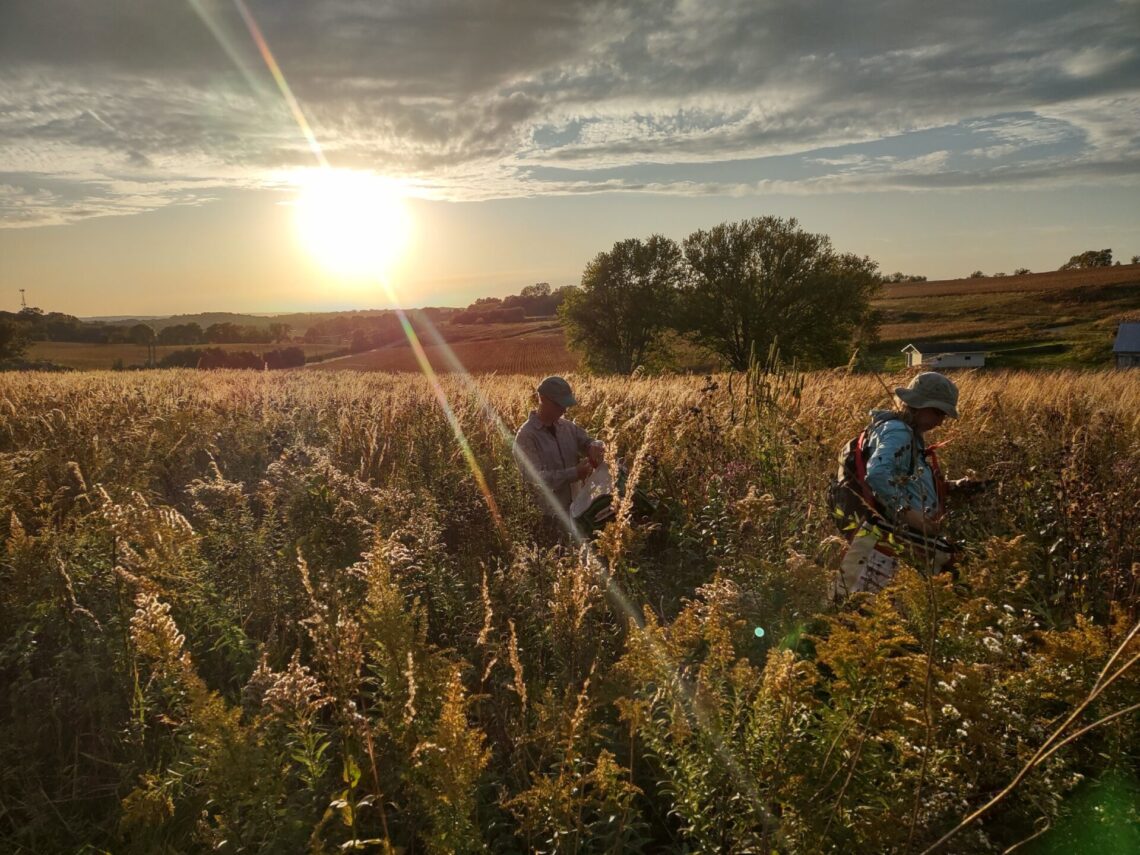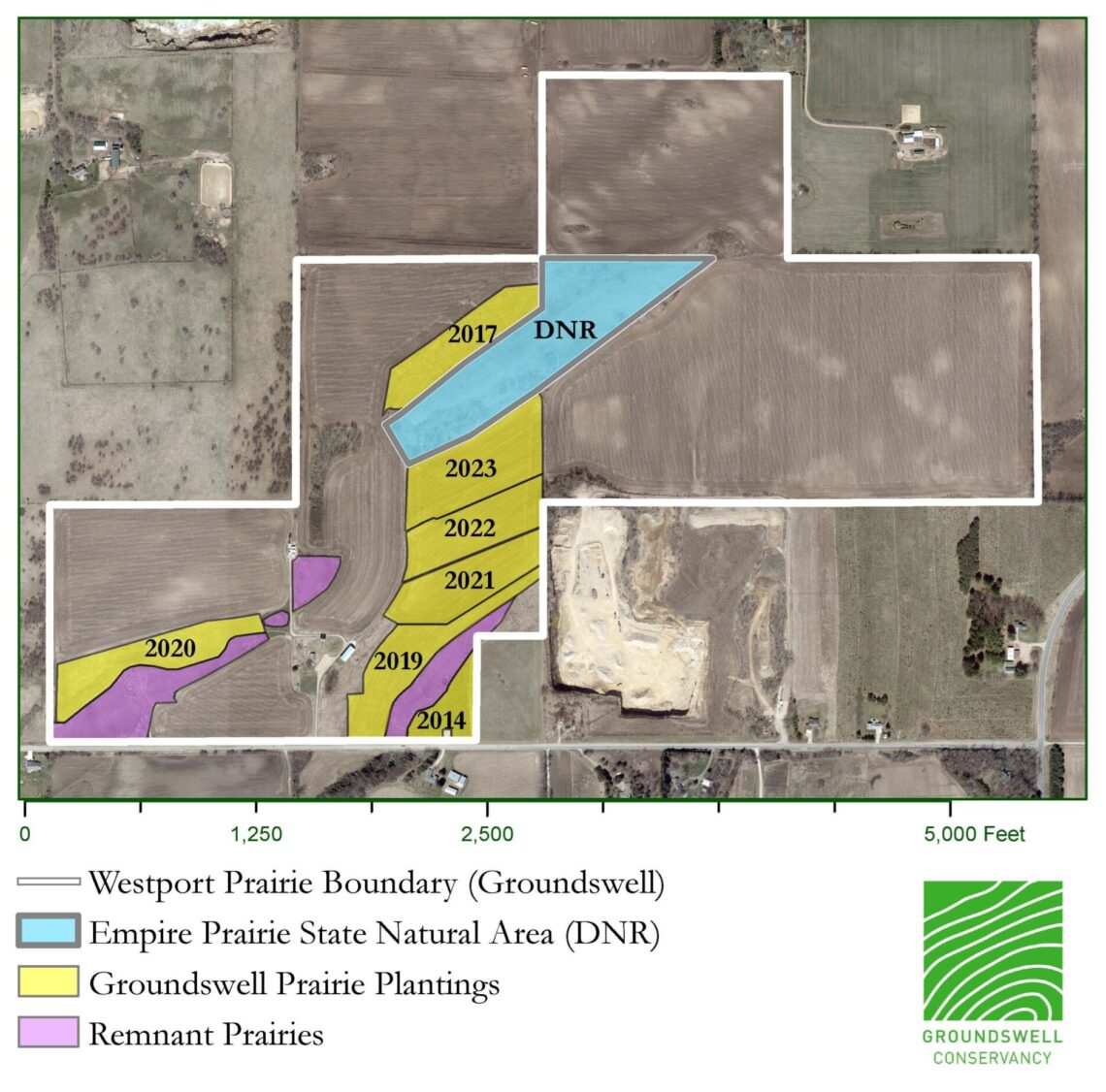Groundswell’s Westport Prairie is a 227-acre wildlife area east of Waunakee that is open to the public. In the middle of it, Wisconsin DNR owns the 14-acre glacial drumlin as a State Natural Area. The drumlin is home to over 100 plant species and is a prime example of a healthy shortgrass prairie. This prairie is only a small part of what used to be the Empire Prairie, that covered up to 150,000 acres in Dane and Columbia Counties.
When Groundswell first purchased the land surrounding the State Natural Area, most of the land was farmed. Scattered around were a few small remnant prairies just a couple of acres in size. These prairies are steep, rocky, and impossible to farm. That’s why they remain today.
Groundswell has a goal of turning all of the farmland (over 200 acres) into native prairie, and we’re doing well! Every year, we take more than 5 acres of farmland out of use and plant it to native flowers and grasses. We use seed collected on-site and from other remnant prairies in the area. This type of prairie planting is called “local genotype restoration” because we use seeds from the local area.
From May to November of each year, we collect prairie seeds with the help of volunteers, interns, conservation crews, and a part-time seed collector that we hire in the fall. We also get seeds donated from the Wisconsin DNR as well as from Southern Wisconsin Bird Alliance.
In winter, when it’s snowy, we sow all the seeds collected during the year and start planning for the next year’s planting.
Our most recent planting from this winter (listed as ‘2023’ on the map) was a historic planting. It was the largest yet at Westport Prairie, covering 6.5 acres. Also, it connects two remnant prairies that used to be one but were separated over time due to farming (the pink remnant prairie to the south with the DNR-owned area in blue to the north).
With each prairie that we plant our seed source grows. This means the size of our plantings will also grow. Next year, we plan to plant 7.5 acres, and 9.5 acres the year after that. Piece by piece, our goal is to bring back a lost landscape by creating habitat that will live on the landscape forever.


